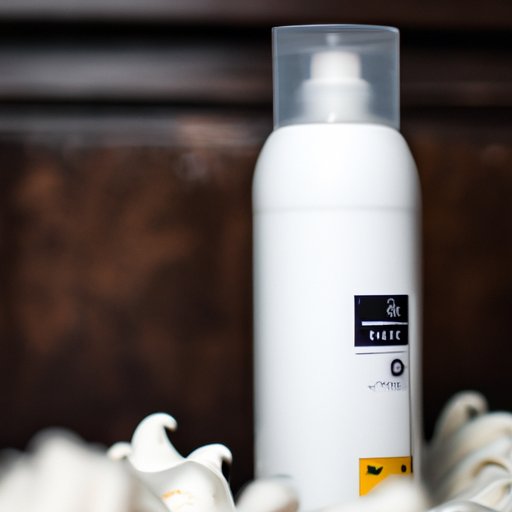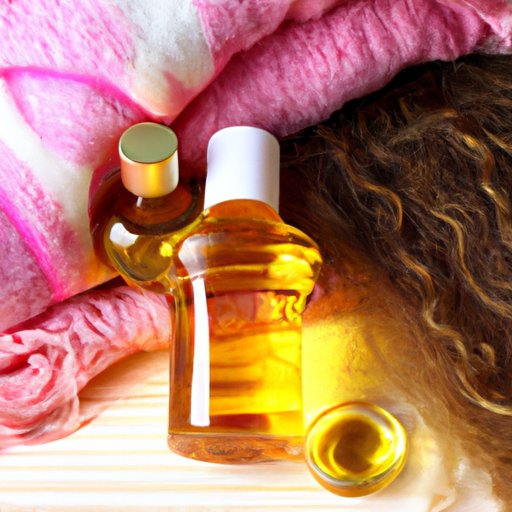Introduction
The cold winter months can wreak havoc on your hair, leaving it dry, brittle, and frizzy. With the right steps and products, you can keep your hair healthy and hydrated during the winter. Here are some tips and tricks for caring for your hair at home during the winter.
Use a Deep Conditioning Hair Mask Once a Week
A deep conditioning hair mask is an essential part of a winter hair care routine. These masks provide intense hydration and nourishment to help repair damaged hair. They also restore moisture and shine, making them a must-have for anyone dealing with dry winter hair.
What is a Deep Conditioning Hair Mask?
A deep conditioning hair mask is a leave-in product that is applied to wet hair and left on for several minutes. It’s usually made with natural ingredients like shea butter, coconut oil, and avocado oil. These ingredients help to replenish lost moisture, strengthen hair strands, and add shine.
How to Apply a Deep Conditioning Hair Mask
To apply a deep conditioning hair mask, start by washing your hair with a mild shampoo and then towel-dry it. Next, apply the mask from the middle of your hair to the ends. Leave the mask on for 10-15 minutes and then rinse out with cool water. For best results, use a deep conditioning mask once a week.

Invest in a Quality Moisturizing Shampoo
Using a quality moisturizing shampoo is another important step in keeping your hair healthy during the winter. Look for shampoos that are sulfate-free and contain natural ingredients like aloe vera, coconut oil, and jojoba oil.
Benefits of a Quality Moisturizing Shampoo
Moisturizing shampoos are formulated to help lock in moisture and protect hair from the elements. They also help to reduce frizz, add shine, and make hair easier to style. In addition, many moisturizing shampoos contain vitamins and minerals that help to nourish and strengthen hair.
Tips for Choosing the Right Shampoo
When choosing a moisturizing shampoo, look for one that is specifically designed for your hair type. If you have dry, brittle hair, opt for a shampoo with extra hydrating ingredients. For oily hair, choose a shampoo that is lightweight and won’t weigh down your locks. You should also look for a shampoo that doesn’t contain any harsh chemicals.
Avoid Hot Water and Heat Styling
Hot water and heat styling can cause even more damage to your hair in the winter. Hot water strips away essential oils, leaving hair dry and prone to breakage. Heat styling tools like blow dryers and flat irons can also cause damage if used too often.
Reasons to Avoid Hot Water
Hot water can strip away the natural oils that keep hair healthy and hydrated. It can also cause split ends and breakage. To prevent this, use lukewarm water when washing your hair. This will help to preserve your hair’s natural oils and keep it looking and feeling its best.
Alternatives to Heat Styling
Heat styling can cause damage to your hair over time, so it’s best to avoid using these tools whenever possible. Instead, opt for air drying with a diffuser or using a heatless styling method like braiding or twisting. These techniques will help to keep your hair healthy and protected from the elements.
Wrap Your Hair in a Silk or Satin Scarf
Wrapping your hair in a silk or satin scarf is another great way to protect it during the winter. These materials are soft and gentle on hair, and they help to lock in moisture and prevent frizz. Wrapping your hair before bed can also help to prevent tangles and breakage.
Benefits of Wrapping Hair in a Silk or Satin Scarf
Silk and satin scarves are gentle on hair and help to retain moisture. They also protect hair from friction, which can lead to breakage. In addition, they help to keep hair smooth and frizz-free. Wrapping your hair in a silk or satin scarf before bed is an easy way to keep it looking its best.
Tips for Wrapping Hair in a Silk or Satin Scarf
To wrap your hair in a silk or satin scarf, start by brushing through your hair to remove any knots or tangles. Then, lay your scarf flat on a surface and place your hair in the center of the scarf. Fold the sides of the scarf over your hair, and then tie the ends together at the back of your head. This will help to keep your hair secure and protected throughout the night.
Keep Your Hair Trimmed
Trimming your hair regularly is an important part of healthy hair care. Regular trims help to get rid of split ends and keep hair looking healthy and shiny. It’s best to get a trim every 6-8 weeks to keep your hair looking its best.
Reasons to Keep Hair Trimmed
Regular trims help to keep your hair healthy by getting rid of split ends. Split ends can cause your hair to look dull and frizzy, and they can make it harder to style. Trimming your hair helps to keep it looking shiny and healthy.
How Often to Get Hair Trimmed
It’s best to get a trim every 6-8 weeks to keep your hair looking its best. If you want to maintain a certain length, you may need to get a trim more often. Talk to your stylist about what schedule is best for your hair type.

Use Natural Oils for Hydration
Natural oils can be used to add hydration and shine to your hair. Coconut oil, argan oil, and jojoba oil are all great options for adding moisture and protecting hair from the elements.
Benefits of Natural Oils
Natural oils are packed with essential vitamins and minerals that help to nourish and hydrate hair. They also help to protect hair from the sun, wind, and other environmental factors. In addition, they add shine and help to keep hair looking healthy.
How to Use Natural Oils
To use natural oils, start by applying a few drops to damp hair. Massage the oil into your scalp and then work it through your hair, focusing on the ends. Leave the oil in your hair for at least 30 minutes and then rinse out with cool water. For best results, use natural oils once or twice a week.

Try a Hot Oil Treatment
A hot oil treatment is a great way to give your hair an extra boost of hydration. Hot oil treatments can help to restore moisture and shine, as well as protect hair from environmental damage.
What is a Hot Oil Treatment?
A hot oil treatment is a deep conditioning treatment that uses heated oils to penetrate the hair shaft and restore moisture. Coconut oil, olive oil, and argan oil are all good choices for a hot oil treatment.
How to Perform a Hot Oil Treatment
To perform a hot oil treatment, start by heating up a few tablespoons of oil in the microwave. Make sure the oil is warm, not hot. Then, apply the oil to your hair, focusing on the ends. Leave the oil in your hair for at least 30 minutes and then rinse out with cool water.
Conclusion
Caring for your hair in the winter doesn’t have to be difficult. With the right steps and products, you can keep your hair healthy and hydrated. Try using a deep conditioning mask once a week, investing in a quality moisturizing shampoo, avoiding hot water and heat styling, wrapping your hair in a silk or satin scarf, keeping your hair trimmed, and using natural oils for hydration. You can also try a hot oil treatment for an extra boost of hydration. With these tips, you can keep your hair looking and feeling its best all winter long.
(Note: Is this article not meeting your expectations? Do you have knowledge or insights to share? Unlock new opportunities and expand your reach by joining our authors team. Click Registration to join us and share your expertise with our readers.)
